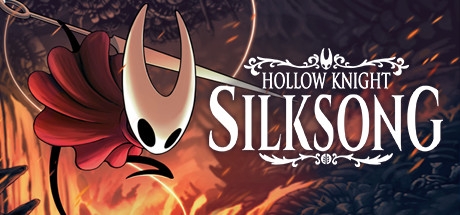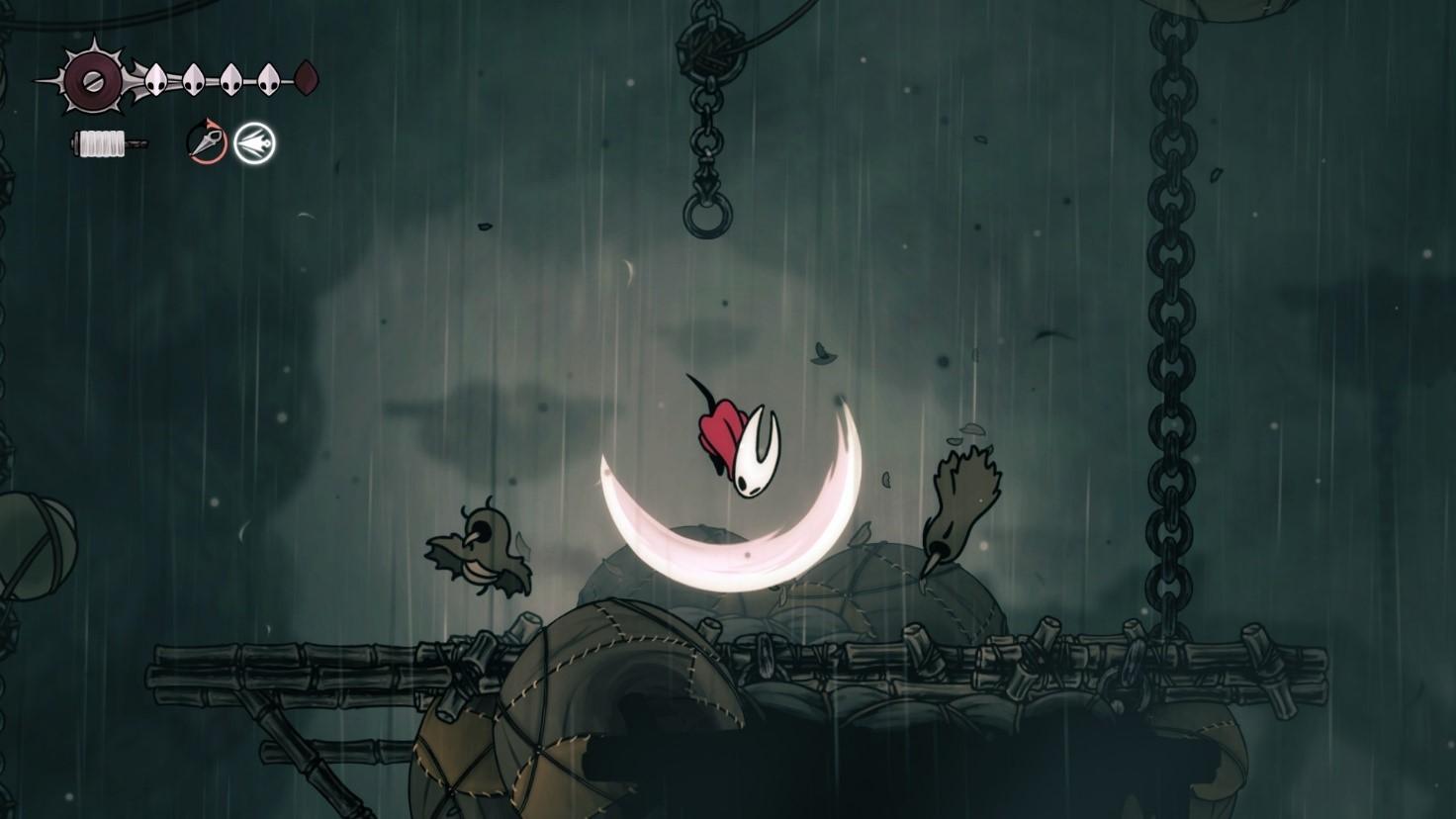Existing User Log In
New User Registration
Register for a free account to gain full access to the VGChartz Network and join our thriving community.





America - Front


America - Back

Few games have had as infamous a wait time as the once DLC, now full-fledged game Silksong, which was announced in 2019 and then years later finally confirmed for release in 2023 2024 2025. It’s been a long, arduous journey, but after six years (and more if you count the full development that allegedly started before the original game), Team Cherry has managed to spin us exactly the sequel you’d expect.

Like its predecessor, Silksong is a combat-focused Metroidvania with thinly veiled inspirations from the Dark Souls series, both mechanically and in its storytelling. This time around we play as Hornet, our slightly cooler-looking rival from the first game, and even though this change doesn’t alter the core game immensely, it makes for a few interesting and generally positive changes.
For one, Hornet isn't a silent protagonist like The Knight, instead having a personality of her own, with a warrior’s pride and a kind heart, which makes her a quite likeable character to play as and gives her more meaningful interactions. For another, the death mechanic has been somewhat altered. We still get to enjoy the convenience of dropping all our money when we die, but this time it's no longer protected by an angry ghost that we have to fight off in the presumably already-lethal location where we died, but is instead contained in a cocoon that will restore all our Silk - a sort of “mana” used to heal (and theoretically cast spells, but you’re going to need it for healing) - upon getting struck once. It’s one of the kinder ones, as far as Souls death mechanics go, but unfortunately Team Cherry still felt the need to limit your maximum Silk later in the game until your cocoon is picked up; an almost hidden punishment that starts out pointless and gets more annoying as you progress.

Finally, and perhaps most importantly, are the combat changes that come with the switch to Hornet. The core mechanics of gameplay are still how you remember them: simple, fun, and fast-paced, but it’s often underrated how much a satisfying moveset adds to the combat of a game, and Hornet delivers there with satisfying slashes and diving attacks that can also be altered with certain crests you find throughout Silksong.
These crests can also be imbued with trinkets – which replace the charms from the first game – that give various, usually minor buffs to Hornet. Trinkets come in three colors: the blue ones give advantages in combat, the yellow ones are more utility based, and finally the red ones – the most novel of the three – are tools to use in battle, like throwing knives or traps or a draught that increases your speed, with limited uses but which can be refreshed when resting at benches. All in all, while there’s nothing ground-breaking in Silksong's combat, it's well-crafted and satisfying, and along with a few additions as you progress it makes for an excellent Metroidvania moveset.

When it comes to the enemies and bosses that you’ll be using this moveset on, Silksong has a pretty massive bestiary by any standards, indie or otherwise, and there’s a good level of variety and challenge to be found. The game also has an actual hunter’s journal that you can fill out, which adds to the level of interest when finding new foes for the first time and learning their moves and how to counter them.
Certainly not every enemy is a joy to fight, and Silksong does have a few that you feel more tempted to run past rather than face the hassle of fighting them, but the average enemy is still on the good side of the scale.

As for the bosses, these are obviously a major part of the series, with their grand telegraphed moves and patterns to learn. Though it’s hard to generalize too much - as we shall get to later on - they’re generally a positive force of the game, with a sense of epicness and achievement in taking them down.
If I was to place a point of criticism on the enemies and bosses, however, it would be that a few later encounters do fall into the unfortunate trope of being more a test of stamina than skill, with long drawn out fights with a trivial phase one. It might not be the worst sinner in this regard, but there are a few cases where you’re likely to run out of patience before you run out of masks.

Aesthetically, it’s once again like its predecessor: a beautifully-crafted game both in terms of its visuals and art style. The blend of simply drawn characters, highly detailed multi-layered environments, and masterful lightning & VFX combine splendidly to bring the world of bugs to life like few other 2D games. And the visuals aren’t all, as the music and audio deliver just as strongly, and deliver an atmosphere that can range from relaxed and serene to brutally intense.
All the aforementioned elements so far add together to form an incredibly strong core Metroidvania experience, probably even more so than the first game, since Silksong does deliver a bit more variety in its environments early on, which adds to the enjoyment of exploration. Traversing and exploring the first many areas, interlaced with the occasional encounter of new characters, side quests, or a boss fight to master is simply a joy and proves Team Cherry has the talent for putting together a damn fine Metroidvania.

Frankly, I wish that the review was finished at this point, and that there were only praises to be sung for Silksong, and many hours in it almost felt like that would be the case, since the exploration and combat were so enjoyable that any tiny flaws I encountered were easy to forgive. Unfortunately there came a point when the scales tipped, and they tipped hard. The problem with many Souls-inspired titles has always been not in their difficulty, but their insistence on kicking the player when they’re down, and though that wasn’t my experience at first with Silksong, it actually has a built-in mechanic beyond the usual resource dropping that serves exactly this role.
As mentioned earlier, Hornet has various tools at her disposal beyond her regular moveset that are limited in use, and the problem is how those tools are limited. The game has two main resources: rosaries and shards, and you'll only drop the former on death, which seems like a blessing. However, shards are instead consumed upon death (or resting on a bench) to refill any tools you've used. So, what’s the problem? The problem is that even with a full pouch of shards, one death can take away a tenth or even a fifth of your total shards if you’ve used up all your tools, and they aren't regained nearly as quickly. In other words, Silksong has taken a page out of Bloodborne’s book and introduced a mechanic that means if you die ten times to a challenging boss, you're not only back where you started - you’re worse off.
The combination of this mechanic with a game that has successive tries at challenging fights as such a core part of its game loop is an unfortunate one; I strongly believe that Silksong would have been better off without it. If, perhaps, bosses had dropped some shards when stunned (at least the ones where that seems plausible), and occasional enemy gauntlets weren’t completely exempt from dropping resources, that would have done much to alleviate this issue. As it stands, all of the difficult encounters are pure resource spenders, with no rewards during or after, so if you find the difficult encounters difficult you might very well be forced to stop fighting them to go grind those shiny rocks or buy tiny bundles of them with your hard-earned rosaries that will last you two or three attempts at best. Admittedly the tools are an optional advantage that are rarely strictly necessary to beat a fight (I rarely used them at all for the first half of the game), but it’s still a limitation that not only puts a struggling player at a disadvantage, but also adds to the frustration of dying and forces players to get stingy with their tools both inside and outside of boss fights.

Unfortunately, while the tools issue is the most universal problem for later parts of the game, it can’t be said to be the only one. After all, the tools mechanic remains the same throughout the entire game. What provokes it to become an issue towards the end is that the difficulty curve, which had been more even than its predecessor, suddenly gets hit by an earthquake. I know that in this post-Souls world it’s damn near blasphemy for a reviewer to criticise a game for its difficulty, but at the risk of being told to “git gud” I have to do exactly that, not for the number of deaths itself but for the things that cause them and the impact this has on the overall experience.
In the world of games, challenge can be its own reward, but only when that challenge feels fair. That tricky line, which Team Cherry walked beautifully during the first half or more, unfortunately starts getting shaky in the later parts. Not only is the enemy density of difficult sections increased, giving you little breathing room to enjoy the journey, but a few areas end up feeling infuriating just for the sake of it. Like traversing a bullet hell of awkwardly-placed enemies and traps, or boss fights where you have to dodge around for 10 seconds between each hit you can safely land, which really only tests your patience. And as much as I can understand the satisfaction that comes from overcoming an annoying boss or section, when the game insists on punishing deaths and placing such sections back to back, it presents a two-fold issue: not only the frustration it can cause, but even more so the pacing that it hurts, thereby taking away focus from exploration, Metroidvania elements, and even the game’s story.
If I should summarize my issue in brief, it’s that the first part of the game is an excellent Metroidvania and a good Soulslike, while the second half (or maybe last third, as it’s a bit of a gradual transition) is only the latter. While this isn’t strictly unique to the second game, it’s made all the more frustrating by how brightly the Metroidvania part shines early on. This is certainly not to say that there aren’t redeeming qualities in the second half, but the fact that I even have to make that disclaimer shows how much these elements tax on what should simply have been an epic conclusion.

If the first half of Silksong was sold separately, I would call it the best Metroidvania since Metroid Dread. If the second half was sold separately, I would call it shock therapy. Put together, Silksong is essentially the exact sequel you’d expect, for better or worse - epic, brutal, fun, and infuriating. A massively impressive game to be sure but, held back by a few design choices, it falls a tad short of the potential you see so clearly in its early stages.









